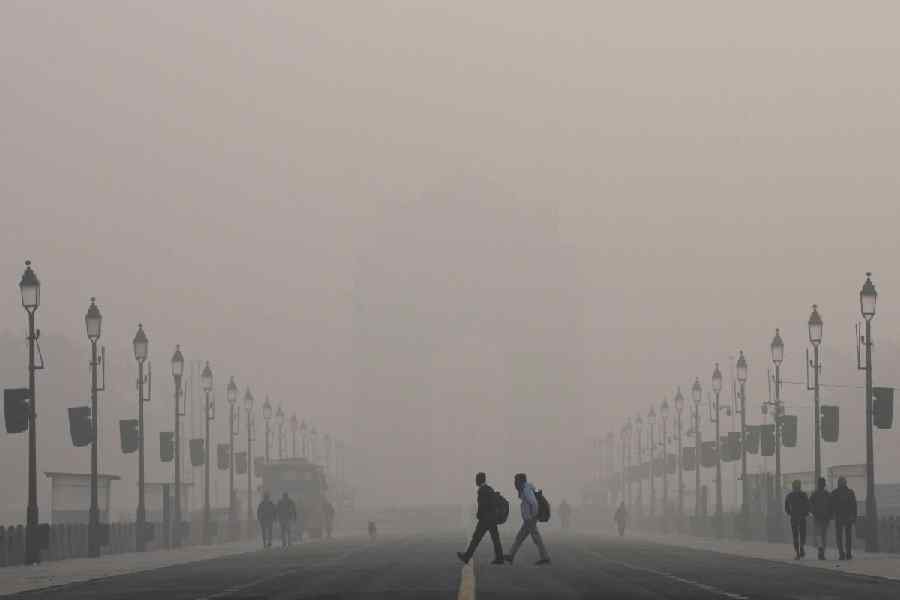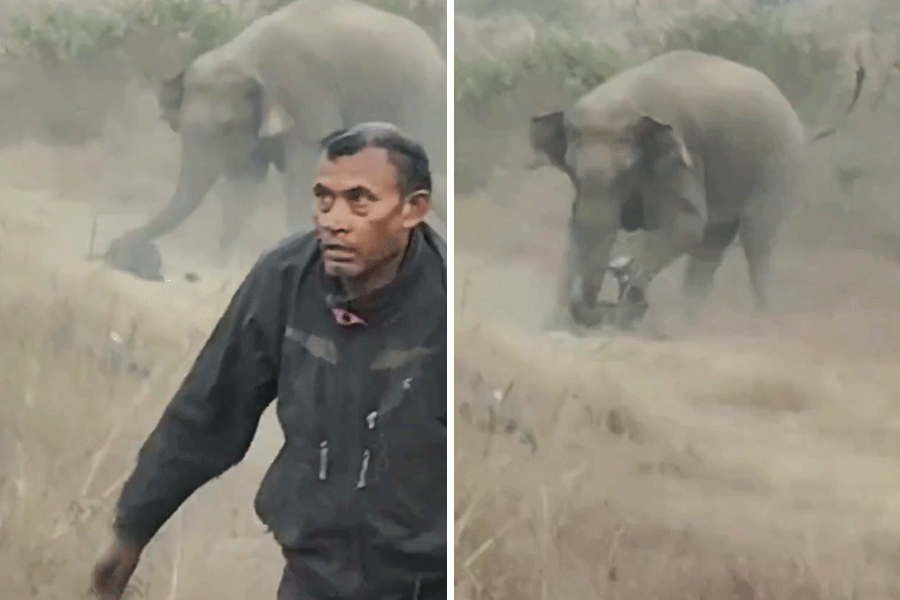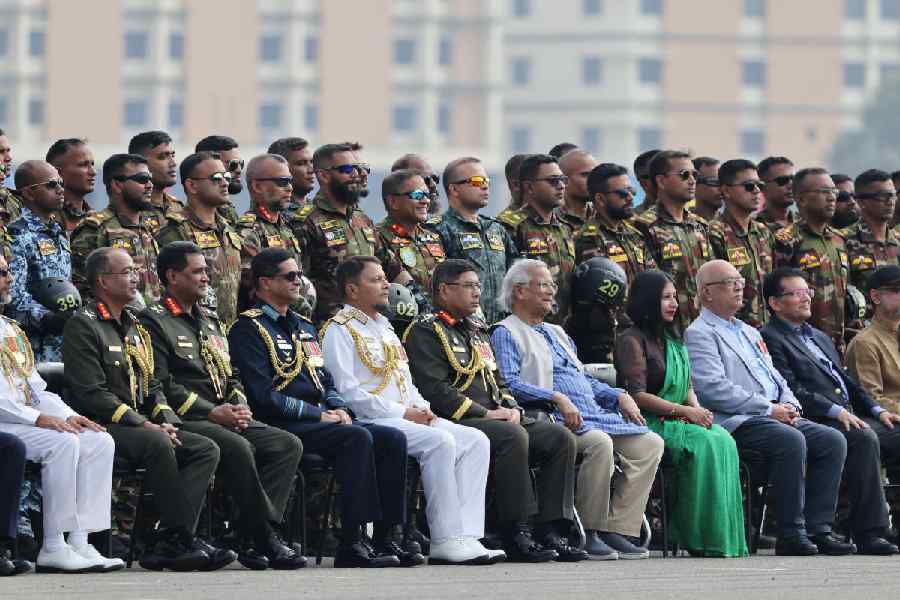 |
When Arunima Sinha summited Mount Everest at 10.55am on 21 May, she screamed so much that her throat cracked. “I went crazy. I wanted the whole world to hear my scream,” she says. After all, it was the culmination of a dream that she had dreamt as she lay with an amputated leg at the All India Institute of Medical Sciences (AIIMS), New Delhi, almost two years ago.
It was only after her sherpa (guide) told her that she had only 15 minutes on the peak that she took out two mini trishuls, a small book of Shiva Chalisa (a prayer book of Lord Shiva) and a picture of Swami Vivekananda. She wrapped them in a cloth, wrote a small message thanking the Almighty, and pressed it in the snow.
“It was my tribute to Shankar bhagwan, and Swami Vivekananda who has been an inspiration throughout my life,” she says.
We are sitting at Delhi’s Constitution Club. Sinha, 26, has just finished her press conference where she smilingly, and confidently, fielded questions and posed for pictures even as Susen Mahato, a tribal youth from Jharkhand who conquered the peak two days before her and was part of the same expedition, mostly sat through the proceedings and watched her hog the limelight.
Though she has landed from Kathmandu only a few hours back, Sinha shows no sign of tiredness. Dressed in a light blue T-shirt, navy blue track pants and brand new sports shoes, she looks every inch an athlete, and sports a large black digital watch on her left wrist. But the 52-day long expedition to Everest has clearly left its mark on her. There are sunburns on her forehead, cheeks, ears and nose. “You should have seen me the day after the conquest. It was as if I had been taken out of a tandoor. I don’t know how many tubes of cream I have used in the last few days to bring my face back to some form of normalcy,” she laughs.
Thousands have scaled Everest since Sir Edmund Hillary and Tenzing Norgay conquered it exactly 60 years ago. But Sinha’s conquest is special because she is the first woman from India with a prosthetic leg to do so.
Her determination may have taken her to the top of the highest peak in the world but it was during her descent that she had a hard time grappling with her handicap. The sock-like silicone liner she wears on her knee to help her prosthetic limb move better, slipped and she couldn’t set it right because of the extreme cold. The result was that she had to drag her left foot in the snow over a long distance. “I couldn’t take off my gloves for fear of frostbite and I was in no position to set it right. So I decided to drag it along,” she says in a matter of fact way.
It was a little over two years ago that Sinha, a national level football and volleyball player from Ambedkarnagar in Uttar Pradesh, hit the headlines when she was pushed off a running train in Bareilly. She was on her way to Delhi from Lucknow on board the Padmavati Express to sit for an examination to join the Central Industrial Security Force (CISF). There was a chain-snatching attempt and when Sinha resisted, the miscreants threw her off the train. Badly injured, she was shifted to AIIMS in Delhi. She survived, but had to have her left leg amputated.
Adding insult to her injury, the Union ministry of youth affairs and sports announced a compensation of Rs 25,000 to her, leading to a national outcry. Finally, the Prime Minister intervened and the compensation was hiked to Rs 2 lakh. She was even offered a job in the Railways.
Of course, there was some controversy surrounding the incident that led to Sinha’s severe injury. The investigating teams of both the Railway Protection Force (RPF) and the Uttar Pradesh police came out with their own versions of the incident. While the RPF claimed that she was probably travelling without a ticket and panicked and jumped off the train when a checker came around, the UP police said it was a probable case of attempted suicide.
Sinha dismisses these theories outright. “I have preserved the ticket to this day. And I am not a weak person that I shall think of committing suicide. But anyway, I gave up on the police the moment they came out with so many falsehoods,” Sinha says.
She adds that she has not enquired about the status of the case since. “I have forgiven and forgotten all those who wronged me,” she says.
That is probably because she was fired with a junoon (obsession), as she puts it. (Incidentally, the word junoon crops up frequently in whatever she says.) As she lay on the bed with her left leg amputated and a steel rod holding up her right leg with multiple fractures, she had to deal with sympathy from government officials, family and friends who visited her. “I was a bechari to everybody who came to see me at AIIMS. But I didn’t feel like an invalid even for a second. I knew that I could never be the player that I was, so I wanted to do something different — so different that everybody would say that it would be impossible,” she says.
That’s when the idea came to her. “Main Everest karungi,” she told herself. “I will climb Everest.” And she had not even started to walk with her prosthetic leg as yet.
When she was released from hospital, she got in touch with Bachendri Pal, the first Indian woman to climb Everest and who now heads the Tata Steel Adventure Foundation in Jamshedpur. Pal asked her to visit her in Jamshedpur. Sinha says that Pal was impressed with a lady who, though was only 5 feet 2, had a determination that soared higher than the mountain she wanted to scale.
“She told me ‘you have conquered Everest in your heart, now you have to do it physically and show it to the world,’” recalls Sinha.
Then began her almost one-and-a-half year journey to the highest peak in the world. Sinha did a basic mountaineering course from the Nehru Institute of Mountaineering, Uttarkashi, where she underwent physical conditioning, rock climbing training, training in the use of oxygen cylinders, mountain weather acclimatisation and so on. She later underwent intensive training under Pal. During this period, she climbed Mount Chhamser Kangri in Ladakh and Island Peak in eastern Nepal. “Conquering Island Peak was very important as it increased my confidence,” says Sinha.
After her descent from Everest, the first person she called was Pal. “It was because of her faith in me that I am here today. We both cried,” says Sinha.
But talking to her, you know that self doubt was never Sinha’s problem. She can also argue her point emphatically. At the press conference someone asked her if the conquest of Everest by an 80-year-old Japanese man this year was not proof that it had become a relatively easy feat to accomplish. Sinha looked a bit angry, but then composed herself and went on to list the things that an aspiring mountaineer has to do before he or she can think of scaling Everest. “The 80-year-old man conquered Everest because of his junoon. His single-mindedness and his physical condition helped him. One needs to be mentally tough and he was. If anybody thinks that climbing Everest is easy, you should just visit the base camp. That will make you realise what a daunting task this is,” she says.
Sinha has also developed the ability to handle uncomfortable questions. When someone asks her about her husband whom she apparently divorced within weeks of getting married last year, she swats away the question with a terse, “That is my personal life and I will not answer questions about it.”
One of three siblings, she is profuse in her praise for her older brother Om Prakash who gave up his job with the CISF to take care of her. She is also non-committal about a job offer from CISF, the force she wanted to join when the train incident happened. When I ask her about an offer from the CISF to make her sub-inspector, she just smiles and tells me, “Let us see how things work out.”
Sinha’s current junoon is the setting up of a sports academy for the disabled in her native Uttar Pradesh. “I had bought some land in Unnao with the money I got after the accident. I plan to build a sports academy for the disabled there,” she says. She reckons that she would need around Rs 12 crore for the academy. “I hope to inspire many more handicapped people to dream like me and achieve their goals,” she says.
And to climb every mountain.











